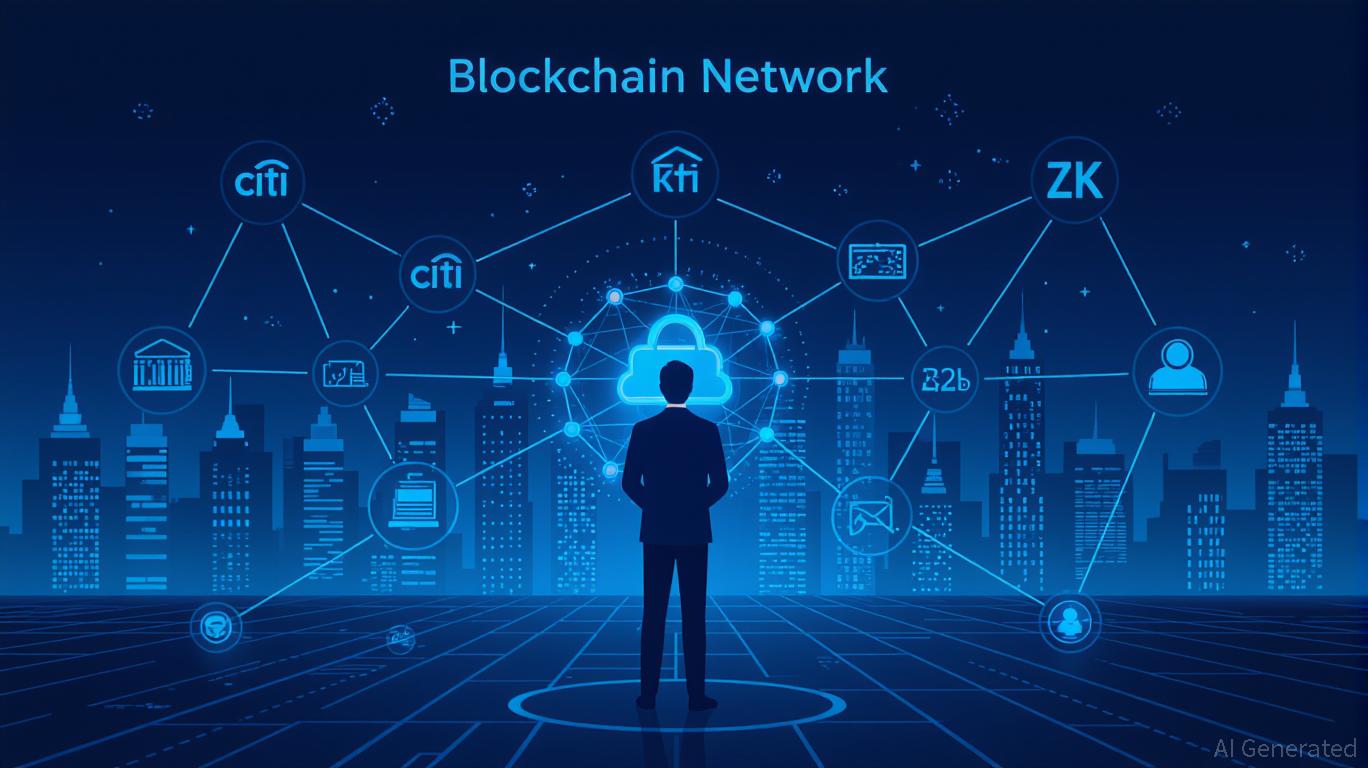Vitalik Buterin Unveils a Fresh ZK Perspective and What It Means for the Crypto Industry
- Vitalik Buterin's GKR protocol revolutionizes ZK scalability, slashing verification costs by 10-15x and enabling ZKsync's 15,000 TPS with near-zero fees. - ZKsync's 150% token surge and institutional adoption by Citibank highlight ZK's market potential, while Starknet and Immutable expand use cases in DeFi and gaming. - Despite progress, Ethereum's modexp bottleneck and regulatory scrutiny of privacy coins like Zcash underscore technical and compliance challenges for ZK's long-term viability.
The cryptocurrency sector in 2025 is undergoing a major transformation thanks to significant advancements in zero-knowledge (ZK) technology, largely influenced by Vitalik Buterin’s recent innovations. As the Ethereum co-founder continues to enhance
The GKR Protocol: Transforming ZK Scalability
Vitalik Buterin’s GKR protocol has become a pivotal element in Ethereum’s 2025 scalability strategy. The protocol theoretically reduces verification costs and hardware needs by up to 15 times, and by 10 times in real-world applications, directly addressing a major challenge in ZK-EVM proofs, according to

Market Performance: ZKsync’s Growth and Competitive Dynamics
ZKsync has become a leading example of ZK’s market promise. Its Atlas upgrade, supported by Buterin, not only reduced gas costs but also attracted major institutions like Citibank and Deutsche Bank, which now use its Prividium platform for privacy-focused infrastructure, according to Bitget. At the same time, rivals such as
Other ZK initiatives are also making headway. Immutable’s zkEVM has brought live gaming environments to life, with games like TOKYO BEAST and Might & Magic: Fates boosting on-chain engagement, according to
Institutional Integration and Technical Progress
Institutional adoption is gaining momentum, as banks and corporations increasingly turn to ZK solutions for compliance and operational efficiency. ZKsync’s Prividium has become a preferred choice for businesses seeking regulatory-compliant blockchain infrastructure, according to Bitget. Likewise, projects like Brevis’ Pico Prism are seeing increased use in DeFi and cross-chain scenarios, Bitget adds.
From a technical standpoint, the industry is advancing. Starknet’s Kakarot EVM support and Linea’s integration with MetaMask indicate strong developer communities, BingX observes. Nonetheless, obstacles persist. Zcash’s optional transparency, while regulatory-friendly, still faces scrutiny, Bitget notes. Additionally, Ethereum’s modexp limitation and the need for GKR adoption across platforms reveal ongoing technical vulnerabilities, AmbCrypto reports.
Risks and Future Outlook
Despite positive developments, significant risks remain. Ethereum’s scalability issues and the price swings of ZK tokens (such as ZKsync’s 150% jump) highlight the industry’s early stage. Withdrawals of institutional funds from ETH ETFs also cast doubt on Ethereum’s capacity to maintain ZK-driven momentum, AmbCrypto notes. For investors, distinguishing between projects with solid technical bases (like Starknet’s $700 million TVL, according to BingX) and those fueled by speculation will be crucial.
Conclusion: The Path Forward for ZK
Vitalik Buterin’s vision for ZK is set to reshape the industry, but its ultimate impact depends on overcoming technical challenges and achieving broad institutional support. ZKsync, Starknet, and
Disclaimer: The content of this article solely reflects the author's opinion and does not represent the platform in any capacity. This article is not intended to serve as a reference for making investment decisions.
You may also like
Whale Investors Acquire 534,894 HYPE Tokens with $21.06 Million USDC
USDC Treasury Mints 500 Million on Solana
Filecoin Gains 54% Amid AI Storage Hype and Grayscale Investments